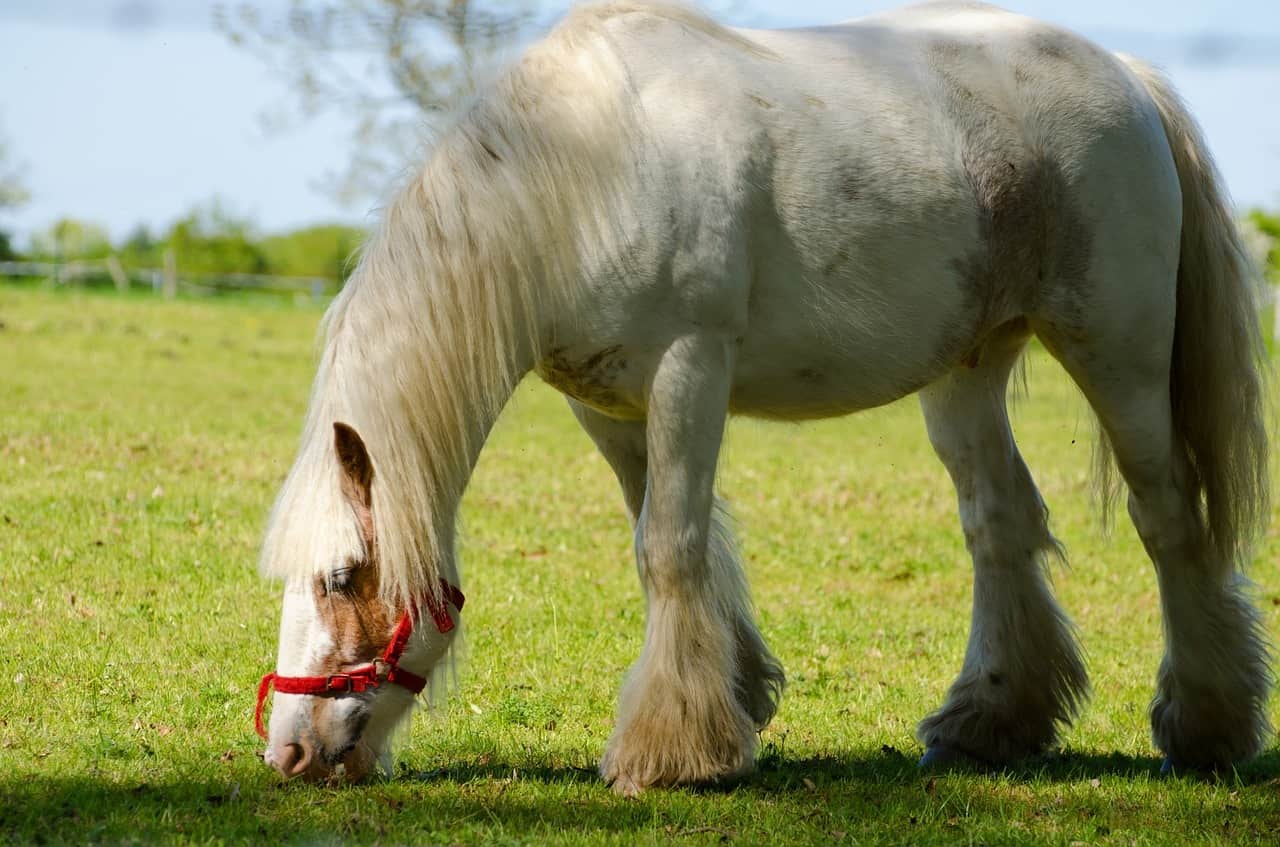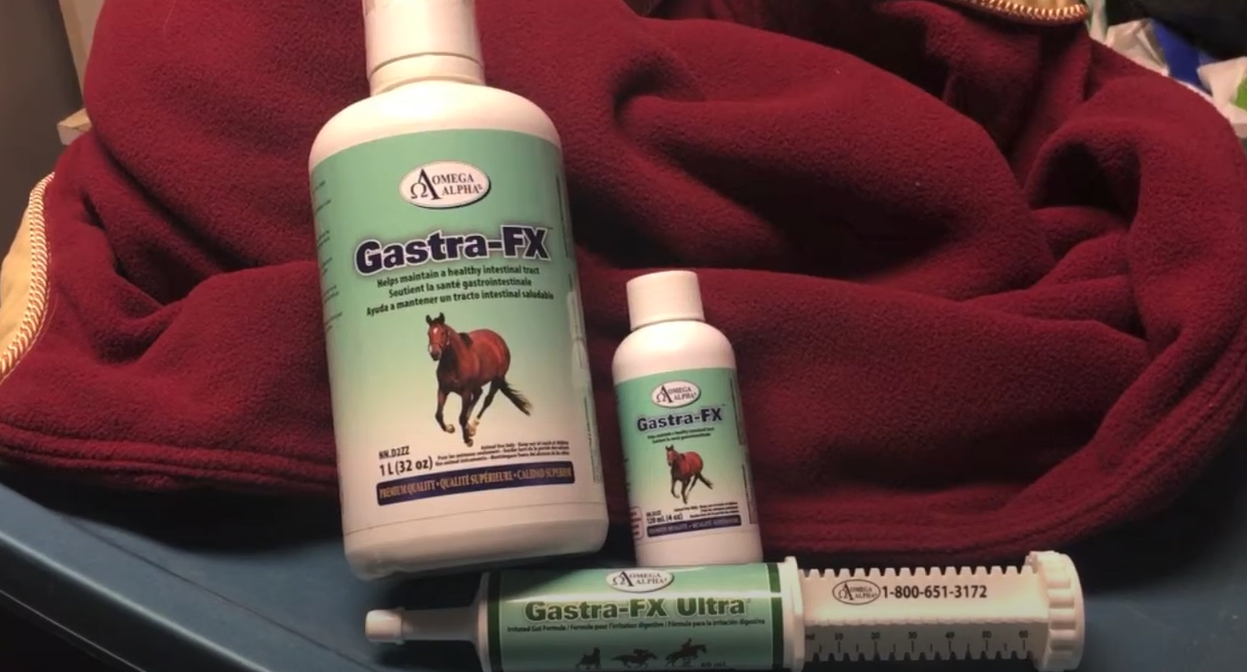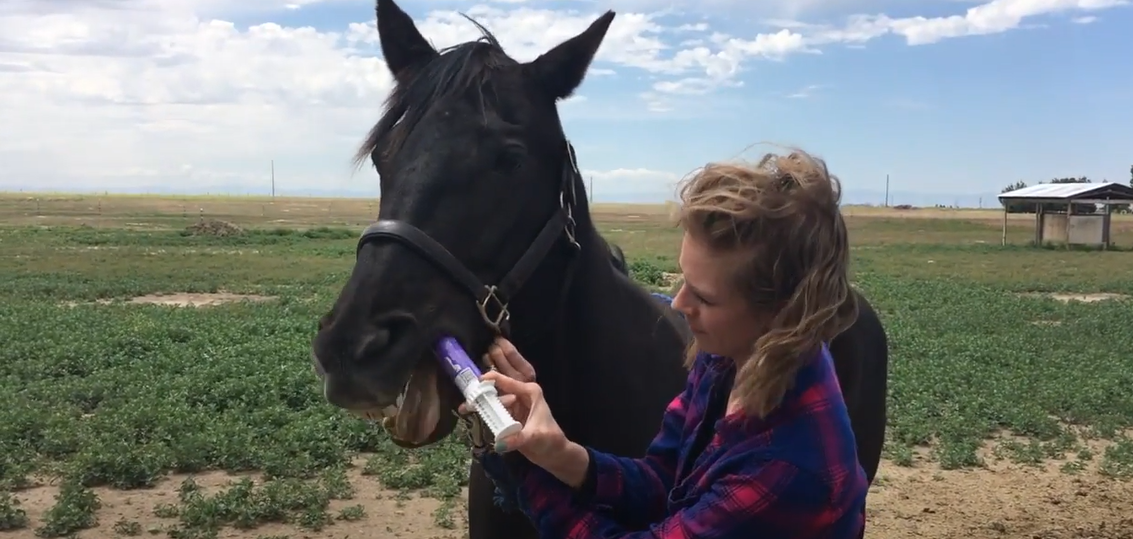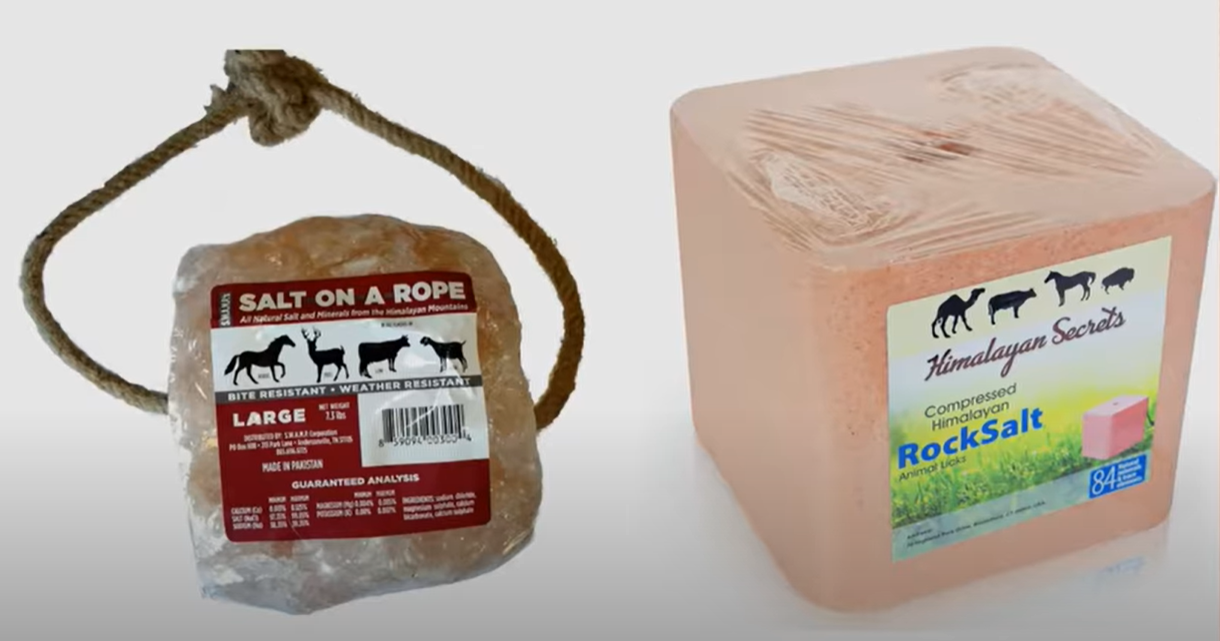If you’ve been a horse owner long enough, then you know that your horse is likely to suffer from lameness or other joint problems at some point. Even if it doesn’t, its performance will decrease significantly as it ages. This is where choosing the best joint supplements for horses can help.
These products supplement the animals’ nutrition to prevent or delay the onset of joint issues. That said, each supplement has a different composition making it better suited for a particular horse.
Not sure of what to go for? The following is a detailed guide to choosing the right equine joint supplements.
What are Equine Joint Supplements?

Joints consist mainly of cartilage, which is the element that connects them to bones. The cartilage serves as a padding that encases the joint. Meanwhile, synovial fluid is responsible for lubricating the joints. This, in turn, minimizes wear and tear between bones.
But as a horse ages, its joint health suffers. This is particularly the case if a horse owner subjects the animal to heavy-duty jobs or intense equine sports.
The animal’s joints may weaken and even the composition of the synovial fluid gets altered. With lubrication compromised, their cartilage can suffer inflammation; hence, deteriorate. All these factors can lead to immense pain and a considerable decrease in equine performance.
To avoid these issues, horse owners usually resort to adding a supplement in the horses’ nutrition. But it’s not just any supplement that works. Only those that contain ingredients like vitamin C, glucosamine and chondroitin sulfate and any other that improve horse joint health. These will be the best joint supplements for horses.
As a horse owner, you might be wondering exactly how glucosamine, msm and other supplements support equine joint health.
Well, each joint supplement has a distinct mechanism of action. Most of them work in one of the following ways:
- Reduce the rate or impede enzymes that cause cartilage deterioration
- Enlarge the capacity for cells known as chondrocytes. The cells are responsible for synthesizing collagen and a couple of other proteins that support horses’ joints
- Make the composition of synovial fluid better
- Enhance the composition of hyaluronic acid via synovial cells
- Reduce inflammation as well as oxidative stress
- Help in pain management
Main Ingredients for Equine Joint Health

Methylsulfonylmethane MSM
A naturally occurring form of sulfur, methylsulfonylmethane (MSM) is one of the core ingredients typically included in equine supplements.
Sulfur is a vital nutrient in horses’ diet. This is particularly because it makes up part of the collagen and glucosamine found in their connective tissues and cartilage.
Efficacy: although more research is being done to determine the essence of MSM in equine feeding programs, preliminary studies have yielded positive outcomes.
A good case in point is a study that was carried out in 2008 using sport horses as the main subject. Based on this, MSM was found to have a protective effect on oxidative stress. The study also revealed that it could be used to reduce inflammation, especially one that stemmed from prolonged exercise sessions.
Dosage: the recommended dosage for MSM is 2 grams for every 100 kg (220 lbs.) of body weight. This means that if your horse weighs roughly 1,000 lbs., then you should supplement its diet with 9 grams of MSM.
Glucosamine
Although this word might seem a bit intimidating, it’s another naturally occurring compound. It’s an integral part of cartilage, which is the tissue responsible for cushioning joints.
However, the glucosamine used to make dietary supplements is usually harvested from either marine life or beef. Besides, it can also be manufactured synthetically.
Fun fact: there are three different kinds of glucosamine: sulfate, hydrochloride and N-acetyl-D-glucosamine.
Efficacy: The role of glucosamine as a joint health supplement is a topic that’s been studied extensively. And while it seems to have positive effects on other species, it doesn’t seem to have that much of an impact on equine health.
In one study, yearling Quarter horses were fed glucosamine supplements daily over the course of 8 weeks. These animals were also taken for exercises and walks. The results showed that glucosamine supplementation had a very small influence on the animals’ joint health.
Dosage: To get the most out of this supplement, higher doses are recommended. Specifically, they should take up to 10,000 mg a day. If feeding the supplement for an extended period, then consider a dosage of 5,000 mg per day instead.
Chondroitin Sulfate
Composing a series of alternating sugars, sulfate chondroitin is another element that makes up the cartilage. For dietary supplementation, manufacturers extract this from bovine species.
Unfortunately, the extraction process is difficult and pricey and so is its synthetic formulation. Due to this, it’s often paired with other glucosamine supplements.
Efficacy: The use of chondroitin sulfate as a supplement for horses has attracted mixed reviews, and it’s easy to see why. Studies conducted to determine its efficacy have yielded inconclusive results.
In one particular research, the horse’s diet was supplemented with both glucosamine and chondroitin sulfate. Unfortunately, results showed no difference in the concentrations of the two nutrients in the horses’ bodies.
Dosage: the amount of chondroitin sulfate to feed will depend on the horse's weight and the specific product in question. Generally, a dose of 1,250 and 5,000 mg per day is recommended for an 1100-pound horse.
Hyaluronic Acid
Also referred to as hyaluronan, hyaluronic acid (HA) is one of the core ingredients present in synovial fluid. Its main role is water retention. Essentially, it forms a thin capsule on the horses’ joints, helping to keep them lubricated.
As a supplement, hyaluronan is typically injected directed into the horse’s joint. However, we also have a couple of oral administrations that are starting to emerge.
Efficacy: If you’ve been a little hesitant to embrace HA injections for equine health, you can rest easy knowing that they’re effective. In fact, the first successful experiment was conducted on track horses. It showed that hyaluronan yielded positive results in enhancing joint support.
The results from this research correspond to those from a different study. In the latter, younglings were given 250 mg of oral hyaluronan supplements for a period of 60 days.
In the end, these animals had much higher levels of hyaluronic acid as well as their synovial fluid composition. This demonstrated a boost in their joint health.
The study also shows that the HA oral supplement produces similar results to those injected directly to the horses’ joints.
In yet another study, yearling thoroughbreds suffering from osteochondritis dissecans were given 100 mg of hyaluronic acid supplements for a month.
In the end, they had less fluid accumulation. This corresponded to earlier findings that hyaluronic acid reduces inflammation and swelling of joints.
Dosage: There aren’t any hard and fast rules on the hyaluronic acid dose for horses. So this boils down to the specific supplement you pick and the dosage provided by the manufacturer.
Resveratrol
Resveratrol belongs to a group of plant compounds known as polyphenols, which are revered for their antioxidant properties.
This compound, which is mainly extracted from grapes, red wine, peanuts and some berries, has shown promising results in equine joint health. Here are a couple of studies that show its efficacy.
Efficacy: In one study, horses diagnosed with mild lameness were given resveratrol. Specifically, their diet was supplemented with 2000 mg of resveratrol powder over the course of 10 days. This regimen was followed by another 18-day supplementation using 1000 mg of the same.
By the end of this period, these animals had significantly fewer markers of lipid peroxidation, which causes oxidative stress. These supplements also helped to decrease the number of enzymes responsible for cartilage degradation.
It’s evident that giving resveratrol joint supplements offers health perks. However, more research is needed to determine just how much of the resveratrol supplement needs to be administered to enjoy these benefits.
Dosage: It’s not clear how much resveratrol should be administered to horses. As such, it depends on the specific instructions indicated on the supplement’s package.
Fatty Acids
Omega 3 fatty acids aren’t just beneficial to humans. They’ve also been proven to offer benefits to our furry pets and horses. The fatty acids that are typically incorporated in the equine joint supplements are: docosahexaenoic acid (DHA) and eicosapentaenoic acid (EPA).
So just what are the benefits of fatty acids in a horse’s body? Well, they help in the following ways:
- Fatty acids reduce inflammation. Specifically, they decrease the production of substances that cause inflammation, such as cytokines, eicosanoids and arachidonic acid.
- Also serve as antioxidants by minimizing the presence of reactive oxidants
Efficacy: the studies done to investigate the effect of fatty acids in equine health has yielded controversial results.
In one particular survey, researchers decided to feed horses with 38 grams of DHA and EPA supplements for three months. Unfortunately, the results showed zero changes in the composition of synovial fluid. The amounts of pro-inflammatory substances didn’t decrease either.
That said, this study had one major shortcoming. This is the fact that it focused only on the impact on synovial fluid. Essentially, it ignored other indicators of inflammation and healthy joint function.
In a different study, fatty acid supplements were shown to have a positive impact in reducing symptoms of osteo-arthritis in horses. In this experiment, researchers decided to feed horses with 5.95 grams of omega 3 fatty acids for up to 75 days.
Compared to the control animals, horses whose diet included these supplements showcased longer stride lengths and increased DHA plasma levels.
Dosage: It’s evident that these joint supplements offer several benefits. Sadly, there’s no evidence that shows exactly how much supplementation should be included in their diet.
Avocado and Soy Unsaponifiables
Did you know that avocado and soybeans contain nutrients that can improve horses’ joints? To be a little more specific, they contain a mixture of vitamins, triterpene alcohols and sterols. These nutrients are collectively referred to as unsaponifiables.
When it comes to equine joint health, they have a positive impact on chondrocytes. Chondrocytes are the cells responsible for cartilage production, which then improve joint health.
Here’s how avocado and soy unsaponifiables help to reduce joint problems:
- Impede the activity of enzymes that cause degradation of cartilage
- Improve the concentration of growth factors pertinent to the composition of joint fluid
- Provide anti-inflammatory benefits
- Minimize joint pain, especially in animals diagnosed with arthritis or those experiencing a deterioration of their joint function
Efficacy: although the research on avocado/ soy unsaponifiables supplementation in horses is limited, it speaks volumes.
One study involved feeding horses these supplements in a 1:2 avocado to soybean ratio. While these equine joint supplements didn’t minimize pain, they increased cartilage synthesis and prevented the degradation of cartilage.
Dosage: the right dose for avocado and soy unsaponifiables is about 1200 mg per day.
Green Lipped Mussel
Based on recent research, a protein called pernin was discovered in the freeze-dried extracts of the green lipped mussel sourced from New Zealand.
The mussel also boasts a high concentration of glucosamine, chondroitin sulfate and omega-3. With such a combination of nutrients, it’s no wonder this compound provides excellent joint support in horses.
So just how does this element support joint health? For one, it provides anti-inflammatory effects.
Specifically, it hinders the synthesis of prostaglandins that cause inflammation. And through these anti-inflammatory benefits, the green lipped mussel also aids in joint pain management.
Efficacy: Research on the use of green lipped mussel as a horse joint supplement has been going on for a while now. The biggest challenge researchers face is the fact that the mussel extracts exist in different forms. This makes it difficult to gauge its performance as a supplement.
But, there’s one study that’s been successful. It examined the effect of the supplement on horses with lameness.
The dosage used to feed these animals was 25 mg per kilogram of body weight. At the end of the study, the supplementation was found to minimize the severity of lameness in horses.
Dosage: no research has been done to determine how much of this supplement to feed your horse. So it comes down to the instructions provided by the joint supplement manufacturer.
Other Ingredients for Horses’ Joint Health
There are a couple of other nutrients you should look for when buying equine joint supplements. These include:
Vitamin A, C and E
These vitamins provide the much-needed antioxidant properties. Oftentimes, they’re combined with other supplements like manganese, copper and selenium.
Curcumin
This is the active compound in turmeric, and it’s revered for its antioxidant and anti-inflammatory characteristics.
CBD Oil
The benefits of CBD oil for humans have been researched extensively in the past few years. Although its role in horse health is still under examination, initial studies show that it’s completely safe for horses and other animals. In fact, it’s thought to help in pain management.
Rose Hip
This is the section of the rose flower just underneath its petals. Filled with rose plant seeds, the rose hip is chock full of nutrients ranging from vitamins to fatty acids, flavonoids and sugars. All these work together nicely to prevent pro- inflammatory mediators.
Collagen
This is the proteinous element that forms the connective tissue throughout a horse’s body. Providing collagen supplements is imperative to enhancing collagen synthesis, which then boosts joint health.
Boswellia
Aherbal extract, this is more popularly known as olibanum or frankincense. This is yet another ingredient that provides anti-inflammatory benefits.
Capsaicin
This is the active ingredient in peppers. Based on numerous research studies, this compound plays a crucial role in pain management for horses’ joints.
Cissus Quadrangularis
For a long time, this vine has been used in Asian traditional medicine. This is not too surprising considering the plant grows extensively in parts of Asia and Africa.
Cetyl myristoleate
These are examples of fatty acids typically extracted from animals. These ingredients are particularly helpful to aging horses, more so those diagnosed with arthritis. Cetyl myristoleates relieve this condition by serving as joint lubricants.
Devil’s Claw
It’s a type of herb although it’s more popularly known as Harpagophytum. While studies have shown that it relieves pain, more research is needed to determine its efficacy.
How to Choose the Best Joint Supplements for Horses

Before you rush to buy any equine supplements, there are a few pointers you should keep in mind. These are:
Life Stage and Horse Activity
The first thing you’ll want to determine is your horse’s stage in life. The reason for this is that the deterioration of connective tissues is more common in senior horses than yearling ones.
On the same note, the activity level of a senior horse varies significantly from yearling and adult horses.
Most horse owners use senior horses for pleasure riding, therapy or other laid-back activities. Meanwhile, an adult horse is subjected to intense activities like barrel racing, show jumping, eventage among others. See some of the best breeds for barrel racing and dressage breeds.
These differences mean that supplements given to these animals will also differ. For instance, the dose of supplement given to a healthy senior horse will likely be less than one given to an adult racehorse.
Similarly, yearling horses meant to be used for racing in the future could benefit from a higher supplement dose. This way, they don’t end up damaging the horse’s joints because of excess workload.
Supplement Bioavailability
Only a handful of buyers remember to check bioavailability when buying a joint supplement. But, this shouldn’t be the case.
Just in case you’re not familiar with this term, bioavailability simply means the amount of nutrient that gets absorbed into the alimentary tract of the horse. In other words, it’s the quantity of the supplement that ends up being used to support joint health.
If a particular joint supplement isn’t bioavailable, then the amount of supplement included in the horse’s nutrition doesn’t matter. None of the supplement will be absorbed efficiently so your horse won’t get any benefit.
When checking the bioavailability of these joint supplements, pay attention to the scope and nature of studies carried out.
Some of the alleged perks of supplements are based on in vitro rather than in vivo studies. In vitro studies means they’re done using cell cultures. Conversely, in vivo studies are performed on actual animals. This makes them more credible than the former.
Form of Supplementation
Equine joint supplements come in one of three forms: pellets, powder or liquid. If you’re looking for a supplement that’s easily absorbed into the animal’s body, then go with liquid. Pellets are also great but they take longer to be absorbed.
Now, if your horse tends to be a bit fussy, then a powder supplement that can be mixed into their drink is better. You may also want to consider buying the best horse calming paste to help calm such animals down.
Dosage
Just because a particular joint supplement contains the ingredients you’re looking for doesn’t mean it’s perfect.
You’ll want to check whether the supplement contains these compounds in the recommended dosages.
For instance, the right amount of hyaluronic acid to add to your horse’s nutrition is about 200 mg a day.
This applies to MSM as well, although the majority of supplements don’t have this ingredient in such generous portions. Meanwhile, the right dosage of vitamin C supplement is rated as 1,000 mg per day.
Brand
You’ll also want to consider the brand responsible for creating the joint supplements. Ideally, you should look for companies that offer excellent customer service and after-sale followups.
Current Joint Health
Before you feed your horse any supplements, examine their current joint health.
This makes it easier to determine the type and quantity of supplementation to get. For instance, if their joints are already injured, then you’ll want to look for a fast-acting product.
Reviews of the 8 Best Horse Joint Supplements
1. NAF 5 Star Superflex
What makes this equine joint supplement unique is its range of ingredients. It’s formulated with glucosamine hydrochloride, chondroitin sulfate and premium-quality MSM.
It also contains an antioxidant formula, making it an excellent addition to horse’s diet. These ingredients work well together to tackle excess toxin accumulation in joints.
Pros
Cons
If you’re looking for a supplement that does more than support joints, this 3-in-1 Combo Product is the answer. It has one of the largest selection of ingredients that include MSM, glucosamine, chondroitin sulfate, manganese among others.
Together, these nutrients promote healthy cartilage while also supporting hoof growth and a lustrous coat.
Pros
Cons
Formulated specifically for an older horse, the UltraCruz ticks all the boxes of essential ingredients that improve equine joint health.
These include methylsulfonylmethane, glucosamine sulfate, HA, vitamin C, Boswellia and Devil’s Claw. Boswellia is particularly effective at improving the inflammatory response of your horse.
Pros
Cons
Have you been hunting for a joint supplement that can be fed to both horses and dogs? If so, look no further than Farnam Next Level.
In addition to the usual glucosamine, chondroitin sulfate and MSM ingredients, this product contains ascorbic acid (vitamin C) and Perna mussel. The vitamin c may seem like an odd addition. But, it plays a crucial role in removing the free radicals created through oxidative stress.
Combined, these ingredients not only enhance joint mobility but also healthy hip. They do this by maintaining cartilage and connective tissue. As a bonus, this liquid supplement is pretty easy to feed your horse.
Pros
Cons
Do you prefer equine supplements that come in powder form? If you do, the Nutramax Cosequin ASU Powder is just what you need.
It contains a number of active ingredients proven to boost joint health. These include Methylsulfonylmethane, glucosamine HCL, and avocado/soybean Unsaponifiables (ASU) powder.
One thing we love about this oral powder product is that it undergoes strict quality control. As such, it’s safe and doesn’t cause any negative side effects.
Pros
Cons
Equine America understands that horses’ performance decreases as they age due to weakening of joints. This is why they formulate Cortaflex with hyaluronic acid as the key ingredient. HA has been scientifically proven to maintain healthy joints.
According to the manufacturer, this supplement also contains the shrinked active isolates of glucosamine and chondroitin. These ingredients not only serve as building blocks but they also stimulate the animal’s own production of glucosamine and chondroitin.
Pros
Cons
If you’re searching for supplements with a fast-acting performance, the Manna Pro Rapid Flex is a great buy.
This product blends joint building blocks and a variety of herbs to provide quick results. The main ingredients present in the Rapid Flex are chondroitin sulfate, glucosamine hydrochloride, and hyaluronic acid.
However, what truly sets this joint supplement from the rest is a unique anise flavor that horses love. It’s also relatively easier to feed it to a horse.
Pros
Cons
Another product ranked as one of the best equine joint supplements is the Maxavita Maxaflex. The active ingredient in this one is a green lipped mussel extract known as SuPernaTM.
While it contains an array of nutrients, it’s particularly rich in omega-3 fatty acids that are revered for their anti-inflammatory traits.
The recommended dose of Maxavita Maxaflex is one scoop per day so as to prevent your horse from experiencing any side effects. And since it comes in a 900g container, it means you’ll have enough to last at least a month.
To add to this, it improves the performance of your horse within a very short time. If your horse was suffering from lameness or had aching joints, their mobility improves in as little as 7 days.
Pros
Cons
Frequently Asked Questions About Horse Joint Supplements
What is the best joint supplement for older horses?
In this case, we recommend the UltraCruz Equine Senior Joint Supplement. It’s formulated with older horses in mind, so it’s formulated with multiple ingredients. All of these are meant to improve joint function.
Do joint supplements for horses work?
Yes, they do. Numerous research studies have shown that incorporating joint supplements in equine nutrition is highly beneficial. They contain ingredients with anti-inflammatory perks. They also boost the production of collagen and cartilage for optimal joint functioning.
Is MSM or glucosamine better for horses?
Truthfully, neither is superior to the other. Both glucosamine & MSM have a role they play in horses’ joint function. MSM improves the inflammatory response of horses. Conversely, glucosamine aids in thee production of cartilage.
What is the best joint supplement for horses with arthritis?
If your horse has been diagnosed with arthritis, then there are specific nutrients you should look for in the equine supplement. These include glucosamine, hyaluronic acid, fatty acids and resveratrol.
Conclusion
Worried that your horses’ joints will weaken or get injured overtime? Well, investing in the best joint supplements for horses can delay their onset or prevent these issues altogether.
On that note, one equine supplement that comes highly recommended is the NAF 5 Star Superflex. Rich in ingredients like MSM and glucosamine, it prevents the excess accumulation of toxin in horses’ joints.











